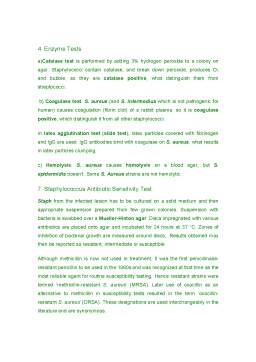Extras din seminar
Because GFR is a primary measure of the health of kidney function, GFR is routinely analyzed. This can be done in several ways. The physical factors and pressures can all be measured experimentally, but this is not practical in humans. Instead, the principle of renal clearance is utilized.
Renal clearance is the volume of plasma cleared of a substance per unit time. The clearance equation incorporates the urine and plasma concentrations of the substance, and the urine flow rate and is usually reported in mL/min or L/day:
This equation can be used to easily determine the GFR: the clearance of a substance is equated to the GFR if the substance is freely filtered, but not reabsorbed or secreted. In this case, the amount filtered will equal the amount excreted [FLx = Ex], and thus:
Since FLx= Px× GFR and Ex =Ux× V when Flx=Ex
then,Px × GFR = Ux ×V
and, rearranging the equation,
Thus, for such a substance, GFR = Cx.
The RPF feeds the glomerular capillaries, but not all of the plasma presented to the capillaries is filtered. The filtration fraction (FF) is the proportion of the RPF that becomes glomerular filtrate:
In the normal adult, FF = (125 mL/min ÷ 600 mL/min) × 100 = ∼20%, so ∼20% of the plasma entering the kidneys is filtered. At the individual nephrons, the unfiltered plasma exits the efferent arteriole to the peritubular capillaries.
If the clearance of inulin (Cin) is 100 mL/min, it means that 100 mL of plasma is completely cleared of inulin each minute. Contrast that to the clearance of glucose, which is 0 mL/min in a normal person, indicating that no plasma is cleared of glucose (and therefore there is no glucose in the urine). The renal clearance of any filtered substance can be calculated, and when the clearance is compared with the GFR, it gives a general idea of whether there was net reabsorption or net secretion of the substance-this is because the GFR is the total rate of filtration that is occurring at any given time.
If the clearance of X is less than the GFR, there is net reabsorption.
If the clearance of X is greater than the GFR, there is net secretion, because more was cleared from the plasma than can be accounted for by GFR alone.
Plasma creatinine is used clinically to estimate GFR. In most cases, the body produces creatinine at a constant rate, so the excretion rate is also constant. Since GFR is equated with the clearance of creatinine [GFR = (UCr × V) ÷ PCr], if creatinine excretion (UCr × V) is constant, the GFR is proportional to 1/PCr. So, when the GFR decreases, less creatinine is filtered and excreted, and plasma creatinine builds up. As a clinical application, this allows a rapid approximation of the GFR by simply analyzing the PCr. PCr is normally ∼1 mg%, so GFR is proportional to 1/1, or 100%. If PCr rises to 2, GFR is ½, or 50%, and so on.
Although there is no endogenous substance that exactly meets these requirements (i.e., the substance is freely filtered, but not reabsorbed or secreted, and, therefore, FLx = Ex), the polyfructose molecule inulin does meet these criteria. It is not broken down in the blood, is freely filtered, and is not reabsorbed or secreted by the kidney. To measure inulin clearance (and thereby determine GFR), inulin is infused intravenously, and when a stable plasma level is achieved, timed urine collections are made. The calculated clearance of inulin can be equated to the GFR (see Fig. 16.5):
C inulin = GFR
Infusing inulin to determine clearance is not routinely used because of the invasive nature of the procedure. Instead, the renal clearance of the endogenous substance creatinine is used to approximate GFR. Creatinine is a by-product of muscle metabolism and is freely filtered by the kidneys. It is not reabsorbed, but there is ∼10% secretion into the renal tubules from the peritubular capillaries, and thus, creatinine clearance overestimates GFR by ∼10%
Analysis of Renal Function
This correlate will focus on the variety of calculations associated with renal function and give examples of their solution.
A constant amount of inulin (in isotonic saline) was infused intravenously to a healthy 25-year-old male. After 3 hours, the man emptied his bladder completely, and then urine was collected after another 2 hours. A blood sample was obtained at the time of urine collection. Blood and urine were analyzed, with results shown below. Analyses of several parameters of renal function were performed.
Urine Plasma
Inulin concentration 1000 mg% 20 mg%
Creatinine concentration 1375 mg% 25 mg%
PAH concentration 300 mg% 1 mg%
Sodium concentration 2.5 mEq/L 140 mEq/L
Urine volume (UV) = 240 mL
Urine collection time = 2 hours
Hematocrit (HCT) = 0.42
The following parameters can be calculated:
Urinary flow rate (V), the rate at which urine is produced. Urine flow is dependent on general fluid homeostasis and fluid intake. Under normal circumstances, if fluid intake is increased, urine flow will increase. If a person ingests ∼3 L of fluid in food and drink, the urinary losses will be slightly less, with the balance made up by insensible losses (breathing, sweating).
V = urine volume/unite of time = 240ml/120min = 2ml/min
Glomerular filtration rate (GFR), the volume of plasma filtered by the glomeruli per unit time. Normal GFR in an adult is ∼100 mL/min, or ∼144 L/day. The GFR in men is typically higher than in women.
GFR is determined by inulin clearance:
Cin =(Uin x V)/Pin = (1000mg% x 2ml/min)/20mg% = 100ml/min
GFR can also be determined by creatinine clearance, which overestimates GFR by ∼10% because of creatinine secretion:
Ccr = (Ucr x V)/Pcr = (1375mg% x 2ml/min)/25mg% = 110ml/min
Preview document
Conținut arhivă zip
- General Anatomy - Seminarii
- Clearance.doc
- Fiziologie nr.doc
- Lab Staphylococcus.doc
- LAB Strepto.doc


















